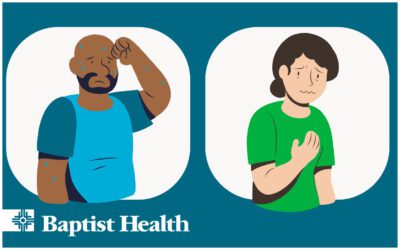Last month we discussed allergies and the impact they can have on quality of life and productivity. This month, we focus on a related topic that affects millions of pediatric and young adult patients in the U.S. and like allergic rhinitis, spring and summer often brings an uptick in the symptoms experienced. Asthma is a chronic inflammation of the lungs’ airways resulting in chronic cough and intermittent episodes of chest tightness, wheezing, and shortness of breath often exacerbated by physical activity or seasonal allergies. Approximately 8.3 million Americans suffer from asthma. While the prevalence is higher in children than adults, asthma is a chronic illness without a cure, but can be managed effectivity with the right treatment.
Asthma usually presents in childhood with recurrent wheezing episodes. These episodes may be preceded by a viral or allergen trigger, resulting in severe coughing and difficulty moving air in and out of the lungs. In infants and young children, one may see repetitive and difficult to treat upper respiratory infections. One of the earliest clues to the presence of asthma is repetitive nighttime cough occurring more than two nights per week. This is especially true when the cough is not associated with other viral or allergy symptoms. Additionally, school-aged children show signs of tiring sooner than their peers with physical activity or acute attacks of shortness of breath and wheezing associated with physical activity. Depending on the severity of the patient’s asthma, exacerbations may result in such severe limitation in airway movement that the patient requires a trip to the ER to receive supplemental oxygen and delivery of medication via “breathing treatments.” In the most severe cases, hospitalization may be required.
Asthma is one of three atopic diseases composed of asthma, allergies, and atopic dermatitis (eczema). These conditions arise when otherwise normal immune cells are in overdrive and trigger an inflammatory condition in the patient. The inflammation in asthma results in narrowing of small to medium-size airways resulting in increased airway resistance. This increased resistance makes it harder for air to move in and out of the lungs resulting in the symptom of shortness of breath experienced by the patient. Patients with asthma may also experience sudden narrowing of the airway, known as airway hyper-reactivity, in response to allergens, physical activity, or even cold air, resulting in an “asthma attack.” Wheezing is the clinical sign detected, usually with a stethoscope, as the air attempts to move through narrowed airways. The best example of this phenomena is trying to suck air through a pinched straw. The narrower the straw becomes, the harder it is to draw air through the straw into the lungs. Additionally, a whistling sound is made as the air becomes turbulent in the narrow airway creating a wheeze.
The diagnosis of asthma in young children is usually clinical based on the symptoms detailed above. However, in older children, adolescents, and adults, the physician may use a special test known as a lung function test to measure the amount of airway obstruction occurring in the lungs’ airways. This test can both aid in diagnosis and assessment of the effectiveness of the prescribed therapy. Furthermore, the physician may use rating scales of symptoms to help adjust treatment or gauge effectiveness as well. Effectiveness can be gauged by how often a patient needs to use a rescue inhaler (albuterol) or how many nights per week a patient experiences nighttime cough.
Treatment for asthma is focused on two approaches: immediate relief of the shortness of breath and long-term management of inflammation resulting in airway narrowing. Short-term relief is accomplished through a short-acting bronchodilator called albuterol. This medication helps to relax the airways, especially during periods of hyper-reactivity or “asthma attack.” Patients with very infrequent symptoms or asthma symptoms only with exercise may only require treatment with albuterol. For most patients however, treatment is based on the daily use of inhaled corticosteroids such as Flovent, Pulmicort, and QVAR. These medications target the underlying inflammation of the airways slowly resulting in improved airflow over time. Certain oral medications such as Singulair and Prednisolone may be used in special cases as add-on therapies. Finally, a new class of medications known as “biologics” is being used to manage those with severe forms of asthma. These medications modulate the immune system and may require monitoring with blood tests or increase the patient’s risk of infection. While most patients with asthma can be managed by their primary care physician, the “biologic” medications are usually prescribed by a specialist such as an allergy-immunologist or pulmonologist.
In addition to medication management, lifestyle modification may be an important part of the management of asthma. Because asthma may be triggered by allergens, management may include reduction in exposure to pet dander, pollen, ragweed, or dust mites. Tobacco smoke and other air pollutants may be potent triggers of asthmatic disease. Additionally, extreme weather conditions can also contribute to exacerbations of asthma. Allergy shots may be used in individuals with frequent asthma flairs that can be linked to certain allergic triggers such as grass or tree pollen that are unavoidable.
A key takeaway should be that early and compliant treatment of asthma can greatly reduce symptoms and can normalize lung function by reducing the underlying inflammation in the airway. Asthma is hereditary, so if there is a family history of asthma, please discuss your risk with your primary care physician. If your physician has diagnosed you with asthma, it is important to take your medications as prescribed, even when your symptoms are mild or appear absent. Left untreated, chronic inflammation of the airway can lead to scarring of the lung. Once this scarring has occurred, it is not reversible with asthma treatments. Such scarring may lead to permanent narrowing of the airway resulting in chronic obstructive pulmonary disease (COPD), a much more difficult-to-manage condition.
Kendall Wagner, M.D. is a regular healthcare contributor to Do South® Magazine.
Chaffee Crossing Clinic
11300 Roberts Boulevard, Fort Smith, Arkansas
479.242.5910
chaffeecrossingclinic.com




